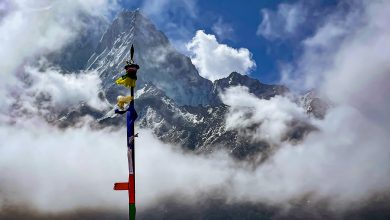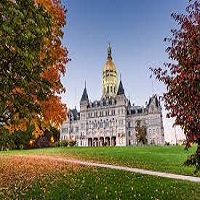An insider’s guide to Goa.

Introduction
We share an insider’s guide to Goa, a small state known for its lifestyle of living in the moment. Some come for the golden beaches and party atmosphere, others seek inner peace at one of his many spiritual retreats. Either way, you’ll find a fascinating cultural blend of East and West…
Located midway along the west coast of India, Goa has long been known for its natural beauty.
Wide sandy beaches, coconut groves, bright green rice paddies, and dense forests. A little exploration reveals that his 450-year-old Portuguese dominion over the region is still evident in its combination of religion, cuisine, and architecture. Among the baroque churches and mansions, there are some wonderful little retreats, from simple seaside shacks to stylish little hotels. Combine all of this with the warm sunshine and you have an ideal winter getaway.
Goan Feni
Feni was originally made from coconut. But now there are many types of Feni in Goa. However, there are two main types. they are,
-
Coconut feni
Coconut feni is made from palm tree flowers. The juice is first extracted from the flowers in a process called toddy tapping. Tupper is called “Rendier”. This method of collecting eddies has been practiced for centuries not only in Goa but throughout Southeast Asia.
At the base of the palm leaf, an earthenware pot called ‘demonem’ or ‘zamono’ is placed. Toddies gather here when tapped with a stick. This toddy is collected twice a day, morning and evening.
Then, after flowing down the tree, it flows into his second container called “dudhinem”. Finally, pour it into the clay pot.
It is fermented for 3 days in another pot called ‘jaro’ or ‘mon’.
Feni is produced in a distillery called ‘Soleachi Batti’. Coconut feni is double distilled. The first product with 15% alcohol is known as “Morop”. It is then mixed with toddy at 4.
Goan Cuisine
Goan cuisine is influenced by many cultures it has come into contact with over the centuries, including Portuguese, Arabic, Brazilian, African, French, Concan, Malabar, Malabar and Chinese. The state’s three main communities, Christians, Hindus and Muslims, also play an important role in diversifying Goa’s cuisine. However, the Portuguese influence is more pronounced in Goan cuisine.
The food of Goan Christians and Goan Hindus is also different. Christian Goan cuisine is influenced by Portuguese, Konkani, British, Saraswat and South Indian cuisines. They have four key elements.
Sweetness, sourness, spices, salt. Hindu Goan cuisine also has these four elements of him, but the cuisine is very different from that of Goan Christians.
A 7-day itinerary in Goa
Amazing 7-day Goa itinerary!
Goa is popular both as a beach destination and as a sub-destination. To have the best time in Goa, you need the perfect itinerary. Here we bring you the ultimate Goa itinerary for 7 days. A week that guarantees a fun and unforgettable vacation.
Day 1 – Arrival
Upon arrival in Goa, check into your hotel and spend the day relaxing or exploring the nearby markets. We recommend planning your trip to be as close to the beach as possible so you can explore the nearby areas later in the day.
Day 2 – Check out North Goa
After breakfast, head to North Goa for an amazing sightseeing tour of historic churches and forts. Of course, beaches are included in the itinerary. If you ask us, we recommend visiting the beaches of Bagator, Baga, and Calangute, where you can also enjoy exciting water sports. You can then navigate around Mapusa. If you have time, visit Shri Bodegshwar Temple. End the day on a high note and head back to your hotel for a good night’s sleep.
Day 3 – Discover Goan Culture
Apart from Goa’s beaches, North Goa also has a cultural side, allowing visitors to feel the true essence of the place. Home to the more than 450-year-old Wanhua Temple, Ponda Village attracts both domestic and international visitors. Goa has also had a definite influence on Portuguese culture, with its vibrant natural landscapes, culinary specialties, and vibrant lifestyle providing a unique identity for the state.
Day 4 – Sightseeing of Old Goa and South Goa
After breakfast, start the day by exploring the traditional roots of Old Goa, and visiting Bom Jesus Church and Se Cathedral. Then rent a bike or car and spend some relaxing time visiting beautiful Palolem Beach, the most popular beach in South Goa. South Goa does not match the parts of North Goa in terms of its lively atmosphere, but it does have some of the most beautiful beaches in the Indian subcontinent, including Barca Beach, Agonda Beach, Colva Beach, and Butterfly Beach. Later, you can explore the area’s bustling markets.
Day 5 – Visit Dudhsagar Waterfall
You have to think that North Goa has the best beaches but forget about one of the highlights of the trip, the Dudhsagar waterfalls. Start your day early so that you have enough time to enjoy the beauty of this place. Of course, Goa is even more beautiful when it rains, and waterfalls far from tourist hotspots come to life during the monsoons. Afterward, you can visit Fort Aguada, which is less than an hour and a half drive from the falls.
Day 6 – Food and Music
Day 6: Visit the beach during the day and go shopping. Lucky if the 6th day of your trip is Saturday! Experience the vibrancy and authenticity of Goa at Street Market while live music fills the air. In addition, stalls are lined up and it is lively.
Day 7 – Rewind
On the last day of your trip, you may be busy packing your things to go home, but you can easily take a vacation in the evening or early morning. Wrap up and take home unforgettable memories.





